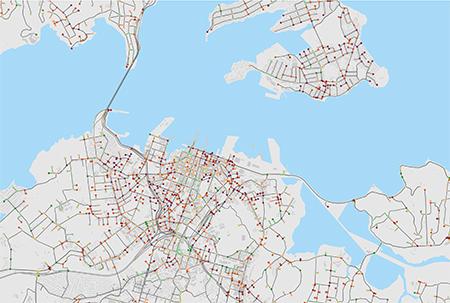Shared Mobility Simulations for Auckland

This report examines how the optimised use of new shared transport modes can change the future of mobility in the Auckland area in New Zealand. Based on computer simulations of different shared mobility scenarios, the study shows that introducing ride sharing and Taxi-Bus services can significantly reduce C02 emissions and improve accessibility while lowering mobility costs and improving service quality for users. Most scenarios also reduce congestion and release public parking space for other uses. The simulations show that new shared modes work particularly effectively in tandem with public transport supply such as rail and bus rapid transit (BRT), for which they can act as feeders. A survey and focus groups for the study explored how willing citizens in the Auckland area are to using shared mobility solutions. Together, the findings provide an evidence base for decision makers to weigh opportunities and challenges created by new forms of shared transport services. The work forms part of a series of studies on shared mobility in different urban and metropolitan contexts.
Policy Insights
- Consider integrating shared mobility services into Auckland’s existing transport offer.
- Use shared services as feeder service for train, ferry and bus rapid transit services to increase use of public transport.
- Ensure shared mobility services are provided in a large enough area of Auckland.
- Target shared mobility services for potential early adopters.
- Integrate land use and transport policies to limit urban sprawl and support the uptake of shared mobility services.
- Create a legal and regulatory framework focused on delivering societal benefits from uptake of shared mobility services.
- Make sharing of performance data a pre-requisite for licensing shared mobility services.